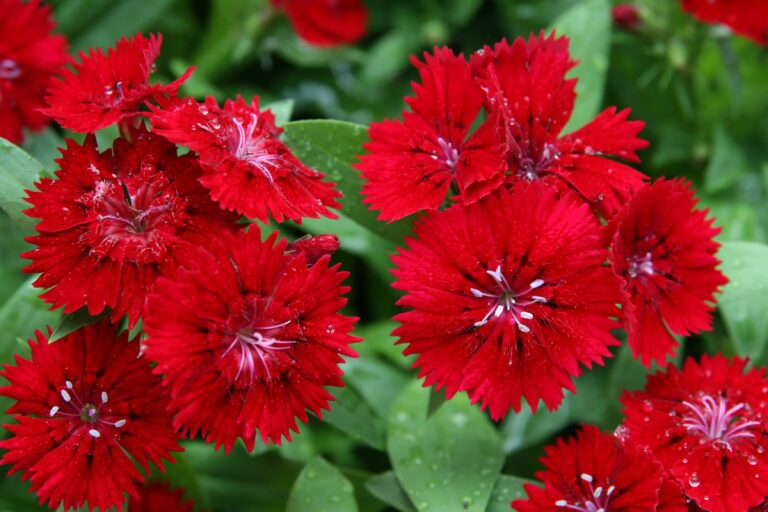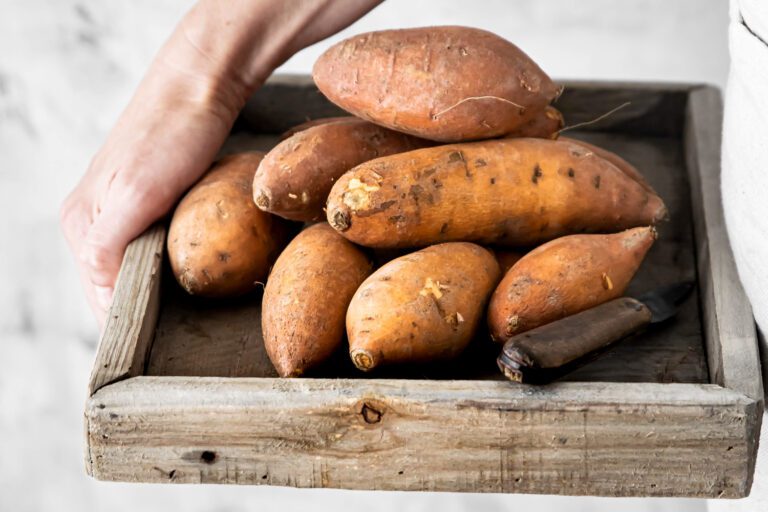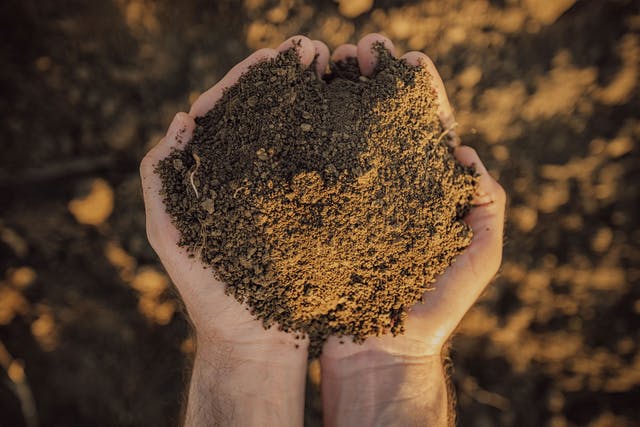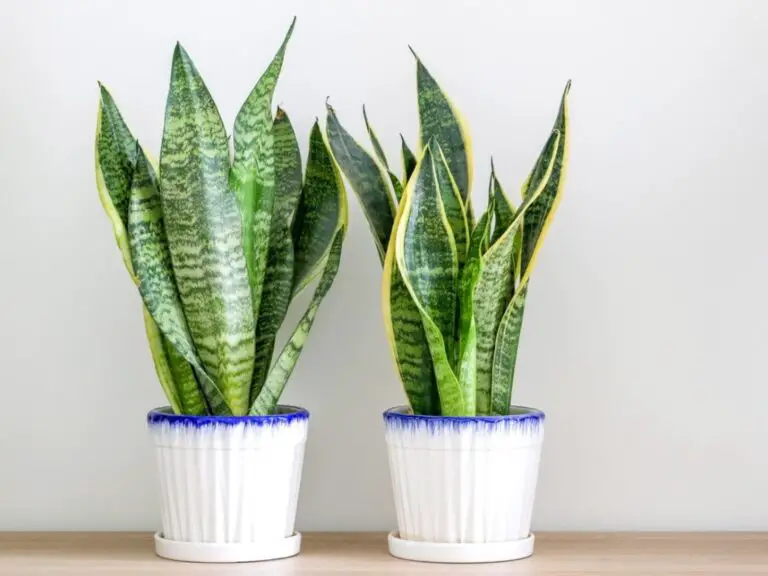How to Build a DIY Stealth Grow Box: A Step-by-Step Guide to Creating a Secret and Secure Space for Your Plants
Table of Contents
Understanding the Benefits of a Stealth Grow Box
Stealth grow boxes have become increasingly popular among gardening enthusiasts due to their numerous benefits. These innovative and discreet systems provide a controlled environment for cultivating plants, allowing individuals to grow their own produce indoors, regardless of the season or climate.
One of the key benefits of a stealth grow box is its ability to provide complete environmental control. With features such as adjustable lighting, temperature control, and humidity regulation, these boxes create an optimal growing environment for plants. This level of control allows gardeners to cater to the specific needs of different plants, ultimately maximizing their growth and yield. Additionally, the enclosed nature of a stealth grow box helps to prevent pests, diseases, and other external factors from interfering with the plants’ health, resulting in healthier and more productive crops.
Furthermore, the discreet design of a stealth grow box offers a range of advantages. These boxes are generally compact and can be easily concealed, making them ideal for individuals with limited space or those who wish to keep their gardening activities private. Whether placed in a basement, closet, or spare room, a stealth grow box blends seamlessly into any living environment, without attracting unwanted attention. Additionally, the use of advanced odor control systems ensures that any distinct aromas associated with plant cultivation are effectively neutralized, further enhancing the discretion of these boxes.
Choosing the Ideal Location for Your Stealth Grow Box
When it comes to choosing the ideal location for your stealth grow box, there are several important factors to consider. First and foremost, you’ll want to select an area that offers ample space and privacy. This will ensure that your plants can grow and flourish without any interference or unwanted attention. Additionally, it’s important to choose a location that provides easy access for maintenance and monitoring. You’ll want to be able to easily check on your plants, adjust lighting and ventilation systems, and address any issues that may arise.
Another crucial consideration is lighting. It’s essential to place your stealth grow box in an area that receives adequate natural light or where you can easily install artificial lighting. Depending on the type of plants you’re growing, they may require a specific amount of light each day. Ensuring they receive the right amount of light is crucial for their growth and overall health. Additionally, be mindful of any potential light leaks that may give away the presence of your grow box. A dark and discreet location will help maintain the desired stealth aspect of your operation.
Overall, selecting the ideal location for your stealth grow box requires careful thought and planning. By considering factors such as space, privacy, accessibility, lighting, and discretion, you can create an environment that promotes optimal growth while keeping your operation hidden from prying eyes. With the right location, your plants will thrive, and you can enjoy the benefits of a successful and discreet gardening endeavor.
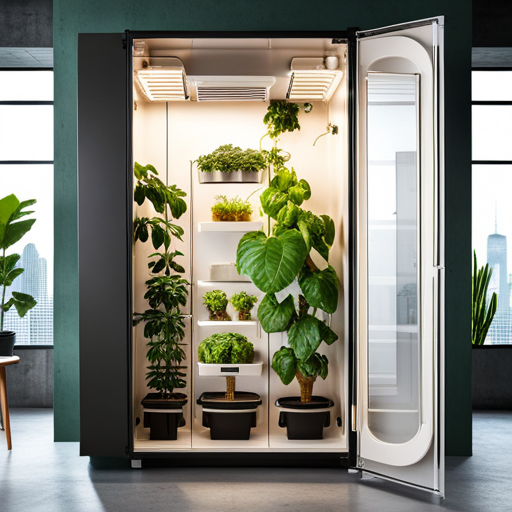
Selecting the Proper Materials for Construction
When it comes to constructing a stealth grow box, choosing the proper materials is crucial to ensure its effectiveness and longevity. The ideal materials are those that are sturdy, lightweight, and resistant to moisture and pests. One popular choice for the frame of the grow box is PVC pipes, as they are affordable, easy to work with, and resistant to corrosion. Another option is using wood, such as plywood or MDF, which provides a more solid structure. When selecting the covering material for the box, it is important to choose something that is lightproof to prevent any light leakage that could attract unwanted attention. Reflective materials, such as Mylar or Panda film, are commonly used as they help maximize light distribution within the grow box. Additionally, consider using adhesive sealants or caulking to ensure that the box is airtight and prevents any strong odors from escaping.
Another factor to consider when selecting materials for your stealth grow box is the insulation properties. Insulating the box can help regulate temperature and humidity levels, providing a more stable environment for your plants. Styrofoam or foam board can be used as insulation materials, as they are lightweight and offer excellent insulation properties. It is also important to use materials that are resistant to fire and moisture, as accidents can happen, and you want to safeguard your investment. Lastly, keep in mind the size and dimensions of your grow box when selecting materials to ensure that they fit seamlessly and provide the necessary support. By carefully selecting the proper materials, you can create a well-constructed and efficient stealth grow box that will meet your needs for years to come.
Designing the Layout for Maximum Efficiency
When designing the layout for maximum efficiency in your stealth grow box, it is crucial to consider the specific needs of your plants. Different plants have varying requirements for light, space, and airflow, and tailoring your layout to meet these needs can greatly enhance their growth and productivity.
First and foremost, allocate sufficient space between plants to allow for proper air circulation. This will prevent the accumulation of moisture, which can lead to the growth of mold or mildew. Additionally, it is essential to provide ample space for each plant to grow and spread its roots. This not only promotes healthy growth but also prevents overcrowding, which can impede airflow and hinder the plants’ ability to access vital nutrients. By carefully spacing out your plants, you create a conducive environment for optimal growth and ensure that each plant receives the necessary resources for development.
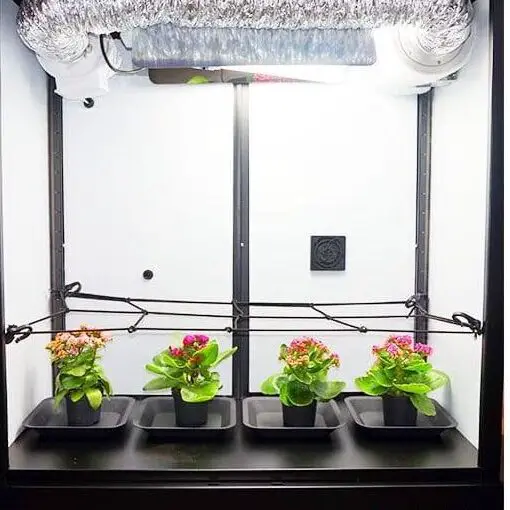
Ensuring Adequate Ventilation and Airflow
When setting up a stealth grow box, adequate ventilation and airflow are crucial for the health and growth of your plants. Without proper ventilation, stale air can accumulate, leading to moisture buildup, mold growth, and decreased oxygen levels. Additionally, poor airflow can cause temperature fluctuations, which can negatively impact plant development.
To ensure optimal ventilation and airflow in your stealth grow box, there are a few key factors to consider. Firstly, it’s important to assess the size of your grow box and determine the appropriate ventilation system that can effectively exchange air within the space. This may involve installing ventilation fans, ducting, and carbon filters to maintain a steady flow of fresh air while removing stale air and odors.
Proper placement of your ventilation system is also crucial. Positioning intake fans near the bottom of the grow box will allow for optimal airflow across the plants, as cooler air tends to settle near the ground. On the other hand, exhaust fans should be positioned at the top of the grow box to expel warm air and promote air circulation. This strategic placement will help maintain a consistent temperature throughout the grow space and prevent any hot spots from occurring.
Remember, in a stealth grow box, effective ventilation and airflow not only promote healthy plant growth, but they also help control odors and keep the space discreet. By implementing a well-planned ventilation system, you can create an environment that fosters optimal plant development while maintaining the secrecy of your indoor garden.
Implementing Effective Lighting Techniques
Lighting is a crucial element in ensuring the successful growth and development of plants in a stealth grow box. With the absence of natural sunlight, it is vital to provide artificial lighting that closely mimics the intensity and spectrum of sunlight. LED grow lights are an excellent choice for stealth grow boxes due to their energy efficiency, long lifespan, and ability to provide the specific light spectrum needed for optimal plant growth.
When selecting LED grow lights for your stealth grow box, it is essential to consider the wattage, color spectrum, and coverage area. The wattage of the LED grow light directly affects the intensity of light emitted, with higher wattages providing more light energy for faster and healthier plant growth. Additionally, choosing LED grow lights with a comprehensive color spectrum, including both blue and red light, is crucial for promoting vegetative growth and flowering respectively. Finally, ensuring that the LED grow lights can adequately cover the entire canopy area of your plants is vital for uniform light distribution and avoiding hotspots or shadowed areas within the grow box.
By carefully considering these factors and selecting LED grow lights that meet the specific requirements of your plants, you can create an effective lighting system that will support healthy growth and maximize yields in your stealth grow box.
Creating a Secure and Discreet Entry System
When designing a stealth grow box, one of the most crucial aspects to consider is creating a secure and discreet entry system. Ensuring that your access is limited to authorized individuals is essential to maintaining the confidentiality and security of your operation. This not only protects your plants from theft or tampering but also helps you avoid unwanted attention or legal complications.
One effective option for a secure entry system is implementing a biometric lock. Biometric locks use unique physical characteristics, such as fingerprints or eye scans, to grant access. This ensures that only authorized individuals can enter the grow box, providing an extra layer of security. Additionally, biometric locks are difficult to bypass or duplicate, making them an excellent choice for safeguarding your stealth grow box.
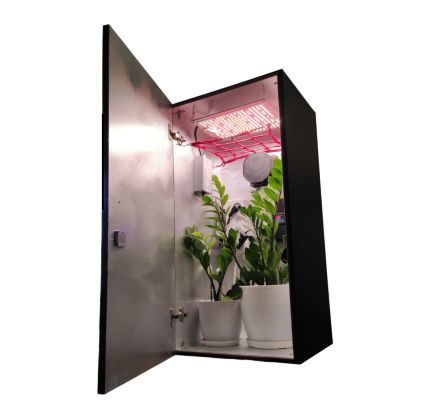
Installing a Reliable and Efficient Ventilation System
Proper ventilation is crucial for maintaining a healthy and thriving indoor garden within a stealth grow box. By installing a reliable and efficient ventilation system, you can effectively control the environmental factors necessary for optimal plant growth. One key aspect to consider is the size of the ventilation system, which should be based on the dimensions of your grow box and the number of plants you intend to cultivate. A well-sized system will ensure that fresh air is continuously circulated, allowing plants to receive an ample supply of carbon dioxide for photosynthesis while preventing the buildup of stale air and excess humidity. Additionally, a proper ventilation system also aids in controlling temperature levels, preventing the risk of overheating and heat stress for your plants.
Another crucial element to consider when installing a ventilation system is the choice of fan. Opt for a high-quality fan that is specifically designed for hydroponic systems, as this will guarantee reliable performance. Additionally, consider the noise level of the fan, especially if discretion is a priority for your grow box. Silent or low-noise fans are available in the market, allowing you to maintain a stealthy operation while ensuring optimal air circulation. Remember, a well-ventilated environment not only promotes the healthy growth of your plants but also helps to combat potential issues such as mold growth and the proliferation of pests. So, investing in a reliable and efficient ventilation system is an essential step for any successful stealth growing endeavor.
Controlling Temperature and Humidity Levels
Maintaining optimal temperature and humidity levels is crucial for the success of any stealth grow box. The environment inside the grow box should closely mimic the natural conditions that plants require for healthy growth.
Temperature control is essential because different plants have different temperature requirements. Generally, most plants thrive in temperatures between 70°F to 85°F (21°C to 29°C) during the day and around 10°F (6°C) lower during the night. Using a combination of fans, exhaust systems, and thermostats can help regulate and maintain a consistent temperature within the grow box. It is important to monitor the temperature closely and make adjustments as needed to ensure the plants are not exposed to extreme heat or cold.
Humidity is another crucial factor that directly impacts plant growth. While the ideal humidity levels may vary depending on the plant species, a range of 50% to 60% humidity is generally considered optimal for most indoor gardening setups. High humidity can promote the growth of mold and other plant diseases, while low humidity can cause dehydration and hinder nutrient absorption. A hygrometer is an essential tool for monitoring humidity levels, and using a dehumidifier or humidifier can help maintain the desired range.
By closely monitoring and controlling temperature and humidity levels, gardening enthusiasts can create an environment that promotes healthy plant growth and maximizes their stealth grow box’s potential. Proper temperature and humidity management not only ensure optimal growing conditions but also help prevent the development of pests and diseases that thrive in unfavorable environments.
Here’s a table outlining ways to control temperature and humidity levels in a stealth grow box:
| Aspect | Control Method | Description |
|---|---|---|
| Temperature Control | Ventilation System | Incorporate an exhaust fan and intake fan to regulate airflow. Maintains optimal temperature by expelling heat and bringing in fresh air. |
| Thermostatic Controls | Use a thermostat to automate the activation of cooling or heating devices. Ensures a consistent temperature range. | |
| Cooling Devices (AC or Cooler) | Install air conditioning units or coolers for temperature reduction. Ideal for controlling heat in confined spaces. | |
| Humidity Control | Dehumidifier | Removes excess moisture from the air to control humidity levels. Prevents mold and bud rot. Critical during flowering. |
| Humidifier | Adds moisture to the air when humidity levels are too low. Maintains optimal humidity for the vegetative stage. | |
| Humidity Monitors | Use hygrometers to monitor and maintain desired humidity levels. Ensures precise control for different growth stages. | |
| Insulation and Sealing | Reflective Materials | Line the interior with reflective materials (e.g., Mylar) to maximize light distribution. Minimizes heat absorption. |
| Sealing Gaps and Vents | Ensure the grow box is airtight by sealing gaps and vents. Prevents air leaks that can impact temperature and humidity control. | |
| Lighting Control | LED Grow Lights with Cooling Systems | Use LED grow lights equipped with built-in cooling systems. Reduces heat emission and maintains a controlled environment. |
| Monitoring and Automation | Smart Controllers | Utilize smart controllers that integrate temperature and humidity sensors. Allows remote monitoring and automation of climate control. |
| Timers | Set timers for ventilation, cooling, and humidity devices. Ensures consistency in environmental conditions. |
Remember that maintaining a consistent and controlled environment is crucial for successful stealth cultivation. Regular monitoring and adjustments based on the specific needs of the cannabis plants during different growth stages are essential for optimal results.
Implementing an Effective Watering and Nutrient System
Implementing an effective watering and nutrient system is crucial for the success of your stealth grow box. By providing your plants with the right amount of water and nutrients, you can ensure optimal growth and yield.
When it comes to watering, it’s important to strike a balance. Over-watering can lead to root rot and other diseases, while under-watering can stunt growth and affect yield. To determine the right amount of water, you can monitor the moisture levels of the growing medium using a moisture meter or by simply checking the soil with your finger. Ideally, the soil should be moist but not soaking wet.
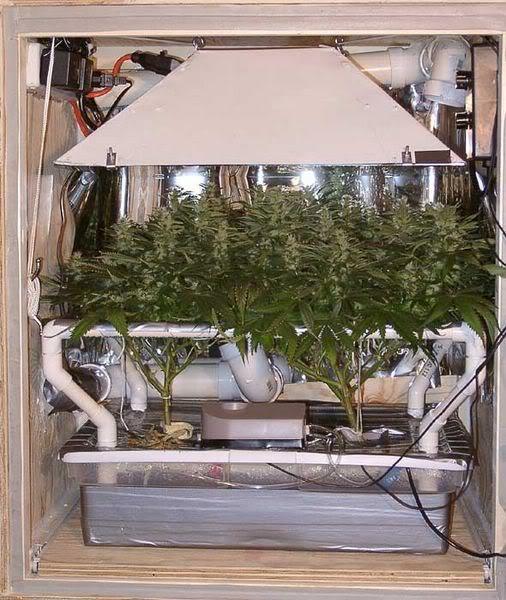
In addition to water, your plants need the right nutrients to thrive. Hydroponic solutions or nutrient mixes specifically designed for indoor gardening can provide your plants with the necessary vitamins, minerals, and trace elements. It’s important to follow the instructions on the nutrient package and adjust the nutrient levels as the plants progress through different growth stages. Regular monitoring of pH levels is also essential, as imbalances can affect nutrient uptake.
By implementing an effective watering and nutrient system, you can provide your plants with the optimal conditions they need to flourish. However, it’s important to note that different plant species and varieties may have specific watering and nutrient requirements. Consulting reliable gardening resources or seeking advice from experienced growers can help you tailor your approach to meet the unique needs of your plants.
Monitoring and Maintaining Plant Health
Monitoring and maintaining plant health is crucial for the success of any stealth grow operation. By closely monitoring the condition of your plants, you can identify and address potential issues before they become major problems. Regular observation allows you to track the development of your plants, ensuring they receive the proper care and attention they need to thrive.
One effective way to monitor plant health is through regular visual inspections. Take the time to examine your plants closely, looking for any signs of stress, disease, or deficiencies. Look for yellowing or browning leaves, spots or lesions, wilting, stunted growth, or any other abnormalities. In addition to visual inspections, it’s also beneficial to keep a record of key growth indicators such as height, leaf color, and overall plant appearance. This record can help you identify patterns or changes over time, providing valuable insights into the health of your plants.
In addition to visual inspections, it’s also important to monitor environmental factors that can impact plant health. Temperature, humidity, and light levels should be closely monitored and adjusted as necessary to create the ideal growing conditions for your plants. Invest in reliable monitoring equipment such as thermometers, hygrometers, and light meters to ensure accurate measurements. By consistently monitoring and adjusting these factors, you can create a stable and optimized environment that promotes healthy plant growth.
Monitoring and maintaining plant health is an ongoing process that requires attentiveness and care. By closely observing your plants and their environment, you can identify and address any issues promptly, ensuring that your plants stay healthy and productive. Additionally, keeping detailed records of your observations and environmental conditions can help you make informed decisions and adjustments for future growth cycles. Remember, a proactive approach to monitoring and maintaining plant health will greatly enhance the success and yield of your stealth grow operation.
Here’s a table outlining ways to monitor and maintain plant health in a stealth grow box:
| Aspect | Monitoring and Maintenance Method | Description |
|---|---|---|
| Lighting Conditions | Light Meters | Use light meters to measure light intensity. Ensure plants receive the appropriate amount of light for their growth stage. |
| Light Schedule Timers | Maintain consistent light schedules for vegetative and flowering stages. Use timers to automate light cycles. | |
| Nutrient Levels | pH Meters and pH Up/Down Solutions | Monitor and adjust pH levels of nutrient solutions. Ensures optimal nutrient uptake by the plants. |
| EC/TDS Meters | Measure electrical conductivity (EC) or total dissolved solids (TDS) to assess nutrient concentration. Avoid overfeeding or underfeeding. | |
| Temperature and Humidity | Temperature and Humidity Sensors | Use sensors to monitor and maintain optimal temperature and humidity levels. Critical for plant growth and resin production. |
| Alert Systems | Install alert systems that notify you of drastic changes in temperature or humidity. Allows prompt intervention. | |
| Air Circulation and Ventilation | Circulation Fans | Position fans to ensure even air distribution. Prevents stagnant air and mold formation. |
| Carbon Dioxide (CO2) Monitoring | Monitor CO2 levels to optimize photosynthesis. Supplement CO2 if levels are suboptimal. | |
| Pest and Disease Control | Regular Inspection | Regularly inspect plants for pests, mold, and diseases. Early detection allows for timely intervention. |
| Natural Predators | Introduce beneficial insects as natural predators for pest control. Avoids the use of chemical pesticides. | |
| Watering Practices | Moisture Meters | Use moisture meters to gauge soil moisture levels. Prevents overwatering or underwatering. |
| Drip Irrigation Systems | Implement automated drip irrigation for precise and consistent watering. Reduces the risk of overwatering. | |
| Training and Pruning | Regular Pruning | Practice regular pruning to remove dead or damaged foliage. Promotes airflow and light penetration. |
| Training Techniques (LST, SCROG) | Employ low-stress training (LST) or screen of green (SCROG) for optimal light exposure and canopy management. |
Regular monitoring and proactive maintenance are essential for a successful stealth grow. Adjustments based on plant responses and growth stages contribute to healthier plants and better yields.
Concealing Your Stealth Grow Box for Maximum Security
Securing your stealth grow box is crucial for maintaining maximum security and ensuring the privacy of your indoor garden. By concealing your grow box effectively, you can minimize the risk of theft or detection, allowing your plants to thrive undisturbed. There are several strategies you can employ to achieve optimal concealment.
Firstly, consider the location of your stealth grow box. Choose an area that is inconspicuous and away from prying eyes. A basement, closet, or unused room can provide the ideal setting for your indoor garden. Additionally, ensure that the room is well-ventilated and has proper access to electricity for your lighting and ventilation systems.
Next, consider the external appearance of your grow box. A plain, unassuming cabinet or storage unit can help to disguise its true purpose. You can further enhance concealment by adding decals or stickers that make it appear as an ordinary piece of furniture or equipment.
Strategically placing your grow box and surrounding it with other items can also aid in camouflage. By creating a cluttered or busy environment, you can divert attention away from your indoor garden. Utilize bookshelves, storage bins, or other items to create a visually distracting backdrop.
Lastly, be mindful of any sound that may emanate from your grow box. Utilize soundproofing materials or position your box in a location that minimizes noise transfer. This will not only prevent detection by potential intruders but also help maintain a discreet atmosphere.
Concealing your stealth grow box is essential for ensuring the security and success of your indoor garden. By following these tips, you can create an inconspicuous environment that safeguards your plants and provides peace of mind. Remember, the key to concealment lies in careful planning, strategic positioning, and attention to detail.
Troubleshooting Common Issues and Problems
One common issue that many growers encounter with their stealth grow boxes is odor control. As plants grow and mature, they can emit strong smells that can easily be detected by others. To address this problem, it is important to invest in a quality carbon filter. Carbon filters are highly effective at trapping and neutralizing odors, ensuring that your grow box remains discreet and undetectable. Regularly maintaining and replacing the carbon filter is crucial to ensure optimal odor control.
Another common problem that growers may face is nutrient deficiencies in their plants. Nutrient deficiencies can manifest in various ways, such as stunted growth, discoloration, or leaf abnormalities. To troubleshoot this issue, it is essential to closely monitor and maintain the nutrient levels in your grow box. Using a high-quality nutrient solution specifically designed for hydroponic systems can help prevent deficiencies. It is also important to correctly adjust pH levels, as improper pH can lead to nutrient lockout and hinder nutrient absorption by the plants. Regularly testing and adjusting pH levels, as well as following a nutrient feeding schedule, will help prevent nutrient deficiencies and ensure healthy plant growth.
Please do watch video!
What are some common issues that can arise with a stealth grow box?
Common issues that can arise with a stealth grow box include temperature and humidity fluctuations, inadequate ventilation, pest infestations, nutrient deficiencies, and security breaches.
How can I troubleshoot temperature and humidity fluctuations in my stealth grow box?
To troubleshoot temperature and humidity fluctuations, you can adjust the ventilation system, add or remove insulation, use a dehumidifier or humidifier, or relocate the grow box to a more suitable environment.
What should I do if my stealth grow box is experiencing inadequate ventilation?
If your stealth grow box has inadequate ventilation, you can increase the airflow by adding more fans, installing a larger exhaust system, or using ducting to ensure proper circulation of air.
How can I address pest infestations in my stealth grow box?
To address pest infestations in a stealth grow box, you can use organic pesticides, maintain cleanliness and hygiene, introduce beneficial insects, and regularly inspect and monitor plants for any signs of pests.
What should I do if my plants show signs of nutrient deficiencies?
If your plants show signs of nutrient deficiencies, you can adjust the pH levels of the nutrient solution, increase or decrease the dosage of specific nutrients, and ensure proper nutrient uptake by maintaining proper watering and feeding schedules.
How can I enhance the security of my stealth grow box?
To enhance the security of your stealth grow box, you can install surveillance cameras, use a secure and discreet entry system, reinforce the box with sturdy materials, and camouflage or conceal the box to make it less noticeable.
What are some steps I can take to monitor and maintain the health of my plants?
To monitor and maintain the health of your plants, you can regularly check for signs of pests, diseases, or nutrient deficiencies, provide adequate lighting and ventilation, maintain proper watering and feeding schedules, and promptly address any issues that arise.
How can I conceal my stealth grow box for maximum security?
To conceal your stealth grow box for maximum security, you can use camouflage techniques such as hiding it in plain sight, using disguises or decoy objects, or incorporating it into existing furniture or structures.
What are some common issues and problems to watch out for when using a stealth grow box?
Some common issues and problems to watch out for when using a stealth grow box include power outages, equipment malfunctions, nutrient imbalances, plant diseases, and accidental damage to plants or equipment.

Nicole Burke is a dynamic writer at SouthElMonteHydroponics, fueled by her passion for horticulture and environmental sustainability. Armed with a degree in Environmental Science from a renowned institution, Nicole’s expertise lies in hydroponic gardening, organic farming, and biodiversity conservation. Her insatiable curiosity and love for nature drive her to explore innovative techniques in hydroponics, seeking to revolutionize the way we grow crops in urban environments. Nicole’s writing reflects her deep commitment to promoting eco-conscious practices and fostering a deeper connection between humans and the natural world. Through her engaging storytelling, she inspires others to embrace sustainable living and harness the power of hydroponics for a greener future.

